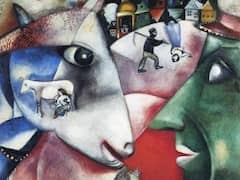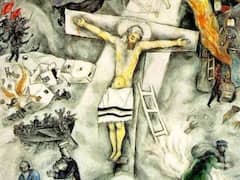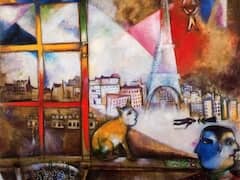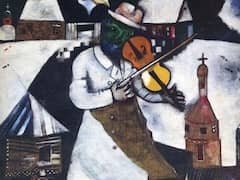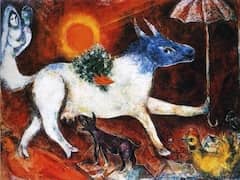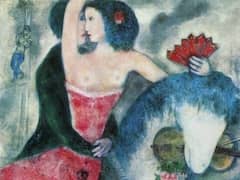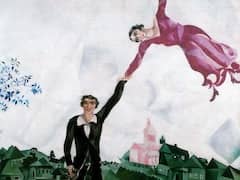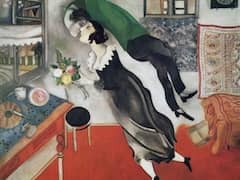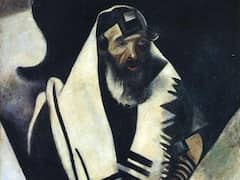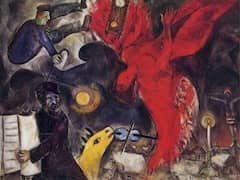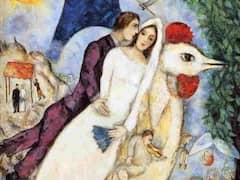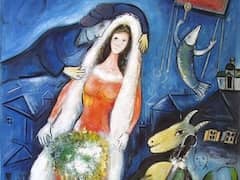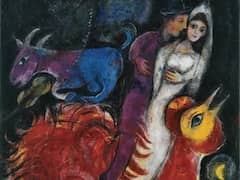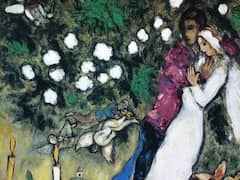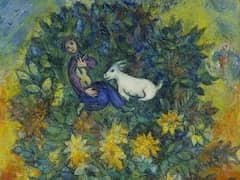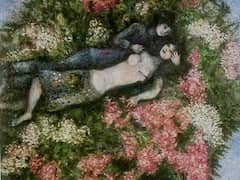The Blue House, 1917 by Marc Chagall
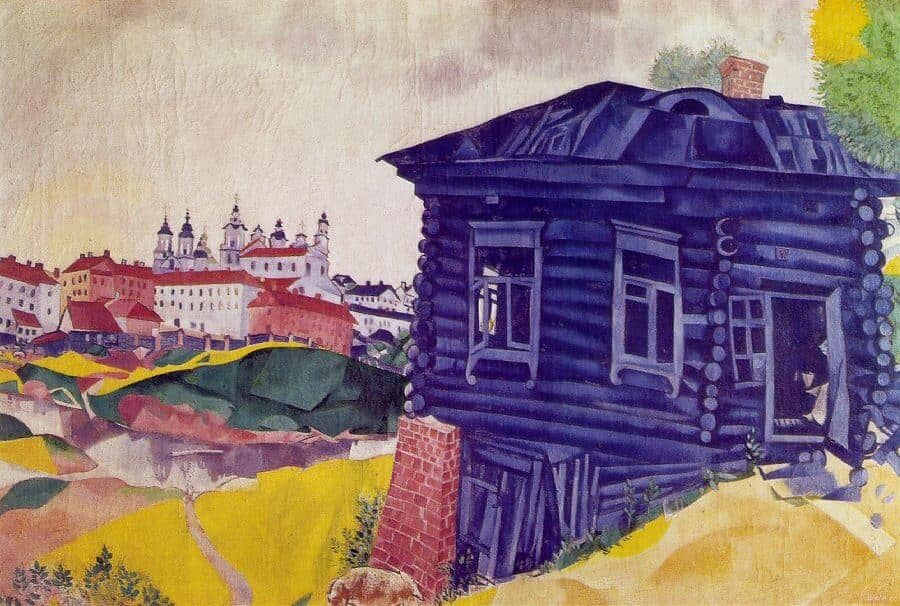
In the summer of 1917 he went home to Vitebsk for a two-month holiday. During that time he painted a series of highly significant landscapes, among them the famous Cemetery Gate and The Blue House. He again confronted nature directly and tried by precise observation to achieve the clearest possible definition of the perceived impression. He often worked from nature, in which case his friend Pen screened him from curious onlookers, but the pictures were completed in the studio. These are highly accomplished paintings, far superior to the "documentary" sketches registering all his new impressions that he made when he first returned to Vitebsk, which were done to satisfy a certain hunger for the reality of his homeland. They have, moreover, on this new level the exclusive character of the tableau manifeste.
In the foreground of The Blue House is one of those Russian wooden houses made of rough-hewn logs, standing on the narrow bank of the river Dvina and shored up against the slope by a support wall of red bricks. The front door opens onto a track running past the house. To the rear there is a path going down to the river, with sloping meadowland on either side. In the background, high up on the farther embankment and reflected in the river, stand the middle-class stone houses in the heart of Vitebsk, topped by the many-towered baroque silhouette of the monastery which stands like an immense crown against the warm-gray sky.
Everything is strikingly accurate, with the outline almost a little too sharp - rather like the exactitude of the conventional vedute. Nevertheless, some of the houses are not quite vertical, and occasionally the perspective is a little off. There is a rhythmic band of rose-colored posts at the lower edge of the town area, and even the bare embankment is curiously faceted by a sequence of geometrical forms and undulating bands. The river takes up this prismatic ornamentation in a mirror reflection and carries it over to the opposite bank. All this creates a gently moving equilibrium not only of the individual groups of forms but also of the spatial arrangement of the planes, which, despite their apparent perspectival accuracy, always lead back in their faceting and interlacing to the surface. It is as though one were looking through a pane, and everything lying behind it had the appearance of being pressed into a flattened dimension.
The principal object to catch the eye is the log hut, and here the artistic manipulation has been carried out with consummate skill. When we look closely we see that this hut, so realistic in appearance, is composed of entirely abstract forms. What in reality would be the rafters have become a purely abstract pattern, making an astonishing contrast with the realistically treated chimneypot. The vertical junctions of logs at the corners of the hut become rhythmical rows of small circular forms, which at the right-hand corner of the hut multiply merrily to form a whole cluster of dangling circles. The horizontal layers of logs create a contrasting rhythmical motif, which in turn becomes disturbed by the crooked and quite unrealistically designed windows. The hut is also part of the surface pattern and plays a major part in the rhythmic to-and-from movement of the planes which we have already noticed in the landscape on the left. What has happened here is the artistic transformation of the natural scene into the poetic vision, for which Chagall has used the same means he invented for himself in Paris in the course of his encounter with Cubism, but which he now has developed in direct contact with nature and then reapplied to the entire organization of the picture. The Cubist doctrines are now linked firmly with reality. They are being "developed and applied in contact with nature," as Paul Cezanne had desired to do, but are already moving into the regions of free poetic expression.

